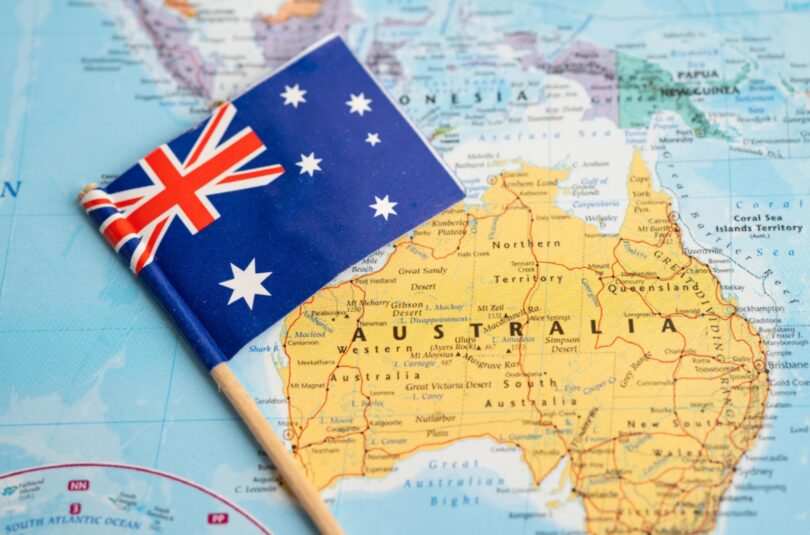Advertisements
Are you planning to move to Australia and bring your family along? Or maybe you’re already in Australia and want to reunite with your loved ones? Well, we have good news for you! Australia has different family visa options that allow families to live together in this beautiful country.
This blog will help you understand everything about migrating to Australia through a Family Visa. You’ll learn what the family visa is all about, the types available, the cost, how to apply, and what to expect.
What is an Australia Family Visa?
An Australia Family Visa is a type of visa that allows people living in Australia to bring close family members to join them. It is also for those who are planning to migrate to Australia through a family member who is already a permanent resident or citizen of the country.
These visas are designed to help families stay together. It is meant for spouses, children, parents, and sometimes other close relatives of Australians.
In short, if your loved one is in Australia, and you want to join them, this visa might be what you need. Whatever the relationship may be, there’s likely a visa option for you under the family visa category.
Who Can Apply for a Family Visa?
The family visa is mainly for:
- Spouses or partners (married or in a de facto relationship)
- A fiancé or fiancée
- Parents of an Australian citizen or permanent resident
- Children
- Other dependent relatives (like aged relatives, carers, orphans)
- A carer (someone who looks after a relative in Australia)
To apply, your family member in Australia must usually be:
- An Australian citizen
- An Australian permanent resident
- Or an eligible New Zealand citizen
Types of Family Visas in Australia
Australia has several types of family visas. There are different types of Family Visas, depending on your relationship with your family member in Australia. Let’s look at each one carefully and explain how they work.
1. Partner Visa (Subclasses 820 and 801 / 309 and 100)
This visa is for people who are married or in a de facto relationship with an Australian citizen or permanent resident.
Advertisements
- Temporary Partner Visa (820/309): This is the first stage. It lets you live in Australia temporarily.
- Permanent Partner Visa (801/100): This is the second stage. After a few years, if your relationship is still genuine, you can apply for permanent residence.
You apply for both visas at the same time, but the permanent visa will take longer to process. You must prove your relationship is real and ongoing. You’ll also need to show that you both live together (or plan to live together).
2. Prospective Marriage Visa (Subclass 300)
This is also called the Fiancé(e) visa. It’s for people who want to marry their Australian partner.
- You must marry within 9 months of arriving in Australia.
- After marriage, you can apply for the Partner visa.
3. Parent Visa (Subclass 103 / 143 / 804)
If you are the parent of an Australian citizen or permanent resident, you can apply to join them. Some of the visa options available to you include.
- Parent Visa (Subclass 103): This is a permanent visa. It is cheaper but takes a longer time to process. The waiting time is very long, sometimes over 10 years.
- Contributory Parent Visa (Subclass 143): These are faster but more expensive. You pay a large fee for quicker processing.
You must pass a “balance of family” test, which means at least half of your children must live permanently in Australia.
4. Child Visa (Subclass 101 / 802)
These are for dependent children of Australian citizens or permanent residents.
- Child Visa (Subclass 101): For children outside Australia.
- Child Visa (Subclass 802): For children already in Australia.
Children must usually be under 18, or full-time students under 25 who are still dependent.
5. Other Family Visas
There are a few more family visas for special cases:
- Carer Visa (Subclass 116/836): For relatives who want to care for an Australian citizen with a medical condition.
- Remaining Relative Visa (Subclass 115/835): For people whose entire close family lives in Australia.
- Aged Dependent Relative Visa (Subclass 114/838): For elderly relatives who depend financially on a relative in Australia.
- Orphan Relative Visa (Subclass 117/837): For children under 18 whose parents have died, cannot care for them, or are unknown.
Requirements for Family Visas
No matter which family visa you apply for, there are some general things you need to meet:
- Health check – You and your family members must pass a health exam.
- Character check – You may need to provide police certificates.
- Genuine relationship – For partner and family visas, your relationship must be real and not just for visa purposes.
- Sponsorship – Your family member in Australia must agree to sponsor you and support you financially if needed.
- Visa fees – You must pay the visa application fees, which vary depending on the visa type.
- Language: English language is not always a must, but it helps in many cases.
How to Apply for an Australia Family Visa
The steps are quite simple, but you need to be careful with your documents and details.
Step 1: Choose the Right Visa
First, find the visa that matches your relationship with your sponsor in Australia. Make sure you read about the visa class carefully.
Step 2: Check the Requirements
Make sure you qualify for the visa. This means checking your relationship, your documents, your health, and your character. Also look at the official immigration website and make sure you meet all the conditions.
Step 3: Get a Sponsor
Your family member in Australia must fill out a sponsorship form. They need to prove they can support you and that the relationship is real.
Step 4: Gather Your Documents
You’ll usually need:
- Passport
- Birth certificate
- Proof of relationship (marriage certificate, photos, messages)
- Police clearance
- Medical report
Step 5: Apply Online
Most family visas are applied for through the Australian immigration website.
Create an ImmiAccount and upload your application and documents.
Step 6: Wait for a Decision
After applying, you’ll need to wait. Some visas are processed faster than others. Parent visas, for example, may take several years. Be patient and keep checking your account for updates.
How Long Does It Take?
Visa processing times vary a lot depending on the type of visa:
- Partner visas: Around 12 to 24 months
- Parent Visa (Subclass 103): 10+ years
- Contributory Parent Visa: 2 to 4 years
- Child visas: Usually quicker, about 8 to 12 months
- Other relative visas: Varies (can be long)
Always remember that it’s good to apply early.
Cost of Family Visas
The prices for these Australian family visas change often. This is why it is always important to check the latest fees on the official website.
Also remember that you might also end up spending on:
- Health exams
- Police certificates
- Translation of documents
- Agent or lawyer fees (if you will be using one)
Benefits of Getting a Family Visa
Once approved, a family visa comes with many benefits:
- Live, work and study in Australia: You’ll be able to stay in Australia legally and enjoy the freedom to work or study just like any other resident. This gives you the chance to build a stable and happy life.
- Access to Medicare (public health): You can get medical care through Australia’s public healthcare system, which helps you save money on hospital visits and treatments.
- Pathway to permanent residency and citizenship: Most family visas lead to permanent residency, and after a few years, you can even apply for Australian citizenship.
- Stay with your loved ones and build a life together: You won’t have to live apart from your family anymore. You can grow, celebrate, and share every moment together in one place.
Frequently Asked Questions (FAQs)
1. Can I work in Australia with a family visa?
Yes, most family visas (especially permanent ones) allow you to work in Australia. Even the temporary partner visa lets you work.
2. How long does it take to get a partner visa?
It depends, but usually between 12 to 24 months. The permanent stage (801/100) comes later.
3. Can I apply while in Australia?
Yes, many family visas let you apply from inside Australia. Just make sure you hold a valid visa when you apply.
4. Do I need a lawyer to apply?
Not always. You can apply by yourself. But if your case is complicated, a registered migration agent can help.
5. Can I include my children in the application?
Yes, many family visas allow you to add dependent children to your application.
6. Is a job offer required for a family visa?
No. Unlike work visas, you don’t need a job offer. Your visa is based on your relationship with your sponsor.
7. Can I visit my family while waiting for my visa?
Yes, you can apply for a visitor visa to see your family while your application is being processed. But this does not guarantee entry.
8. What if my relationship ends before my visa is approved?
If your relationship ends before getting the visa, your application might be refused. But there are some exceptions for special cases like domestic violence.
Conclusion
Moving to Australia to be with your family is a big and exciting step. The Australia Family Visa makes it possible to reunite with your loved ones and start a new chapter together.
Yes, the process takes time and effort, but the result is worth it; you will get to build a life in one of the safest and most beautiful countries in the world.
Remember:
- Choose the right visa for your situation
- Make sure your documents are complete and genuine
- Be patient and stay positive
If you still have any doubts, visit the Australian immigration website. And if it all seems confusing, don’t hesitate to ask a migration expert for help.
Good luck with your journey to Australia!
Advertisements


